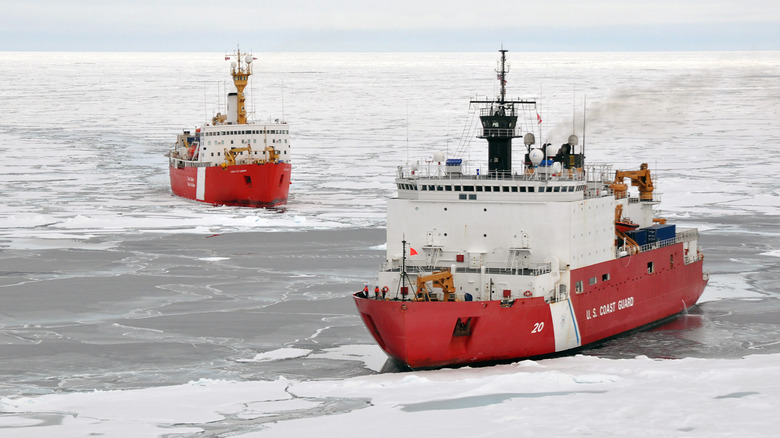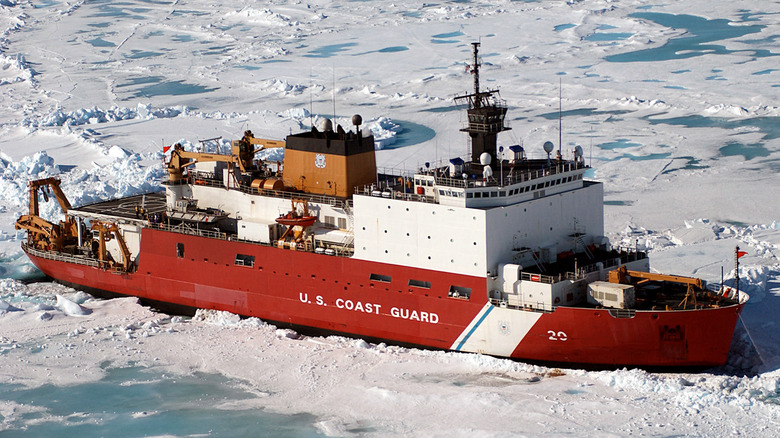The US Coast Guard Closes A Deal To Expand Its Fleet Of Icebreakers For Arctic Travel
In October 2025, the United States Coast Guard signed a Memorandum of Understanding (MOU) with Finland to expand its Arctic-capable icebreaker fleet. This agreement allows for the construction of 11 medium-class Arctic Security Cutters (ASCs). Seven of these ships will be built in American shipyards, with four more being assembled in Finland. The $6.1 billion deal was announced after a meeting between U.S. President Donald Trump, Finnish President Alexander Stubb, and Finnish Prime Minister Petteri Orpo. The program involves the partnership of two major shipbuilding companies.
One of the companies tasked with building these vessels is Davie Shipbuilding, which will construct five total ships, two in Finland at its Helsinki Shipyard and three in Texas. At the same time, Bollinger, a notable manufacturer of U.S. Navy ships, has teamed up with Rauma Marine to build six cutters, two in Finland by Rauma and four in the U.S. at Bollinger shipyards. Icebreakers are very different from other ships, which is a major point considering the complexity of these construction projects.The first vessels won't be ready until 2028, and the plan is to have five operational within that year.
Vessel casualties and glaring fleet gap
Currently, the U.S. Coast Guard only has three operational icebreakers, since the Polar Sea was decommissioned in 2010. The active vessels include heavy cutter USCGC Polar Star, commissioned in the 1970s, medium icebreaker USCGC Healy, launched in 1999, and the M/V Aiviq, purchased in December 2024 and later renamed CGC Storis. These ships sail through some of the world's most challenging polar waters, carrying out research, logistical missions, and supporting national security operations. Over the years, the Coast Guard has faced some serious challenges to a cutter fleet that's already slim in numbers.
The Polar Sea suffered a massive engine failure, forcing it out of service in 2010, and the Healy suffered a significant electrical fire in 2024 that had it temporarily sidelined — highlighting just a couple of the risks icebreakers face at sea. The acquisition and refurbishment of the CGC Storis, a Polar Class 3-equivalent vessel capable of breaking ice where most U.S. ships cannot, became the first new icebreaker added in 25 years and was intended to help fill the gap. Even with this addition, government documents show the Coast Guard still falls way short of its target of eight to nine polar icebreakers for reliable year-round operations, pointing out the demand to expand Arctic capabilities.
The most modern ice breaking vessels in the world
These new Arctic Security Cutters are designed to provide a huge boost to U.S. Arctic capabilities. The Bollinger-Rauma MPI-class vessels can break four feet of ice continuously, carry fuel for 60-day missions, and have a 12,000-nautical-mile range, allowing extended Arctic operations without having to resupply. According to High North News, the Davie Shipbuilding MPPS-100 design is described as a "fourth-generation" Arctic Security Cutter proposal by its Helsinki Shipyard team, designed under the U.S.-Finland agreement. These medium-class cutters are a vital part of bridging the operational gap for operating year-round in polar environments, as the U.S. heavy Polar Security Cutter program is delayed until around 2030.
Technology transfer to American shipyards is an added benefit of the MOU, as well as creating jobs, and guarantees long-term self-sufficiency in the production of future high-tech icebreakers that are far more advanced than its much older ship, ranked as one of the oldest still in service. If things workout as planned and all 11 medium icebreaker's are finally are ready to go, the new ship's will form the foundation of the largest expansion of America's polar fleet in history, finally giving the Coast Guard the tools to navigate, operate, and maintain its presence in one of the world's most demanding environments.


